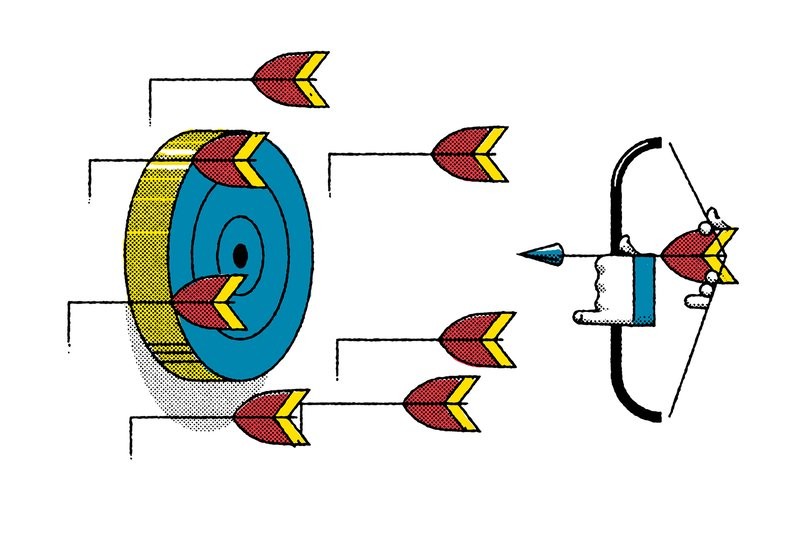都說90%的新創(chuàng)公司會倒閉,數(shù)據(jù)顯示可不是這樣

|
進入一個不熟悉的社會后,明智的做法是入鄉(xiāng)隨俗,,了解那里的英雄,、壞蛋和神靈都是誰。 這一原則同樣適用于初創(chuàng)領(lǐng)域,。對外來者而言,,風投支持的初創(chuàng)公司的世界或許讓他們覺得無法理解。但不要絕望,,因為有關(guān)初創(chuàng)之路的免費指南在互聯(lián)網(wǎng)上比比皆是,。首先可以了解一下知名人物的姓名縮寫,比如PG,、TK,、@AVC、a16z(它們分別指Y Combinator創(chuàng)始人保羅·格雷厄姆,、優(yōu)步CEO特拉維斯·卡蘭尼克,、合廣風投基金合伙人弗萊德·威爾森以及風投公司安德森-霍羅維茨)。關(guān)注他們的博客,,聽聽他們的播客,,念叨一下他們的名言,再了解一下他們用過的縮略語(FNAC的意思是“功能而不是一家公司(feature, not a company)”,,HENRY是指“還沒有成為富人的高收入者(high earner, not rich yet)”),。在Startup Funding Bot、Startup Patterns,、Startup Quotes等產(chǎn)品以及網(wǎng)站Great Fucking Startup Advice的幫助下,,大家甚至可以通過移動信息推送來大量消化吸收以前的創(chuàng)業(yè)智慧(比如這條建議:“別去請求同意,去請求他X的原諒,?!保? 初創(chuàng)領(lǐng)域的知識整體上包含一些神話,、一些建議、一些靈感以及零零碎碎的經(jīng)過商學院認可的案例分析(大學都在增設(shè)創(chuàng)業(yè)課程,,貝寶聯(lián)合創(chuàng)始人彼得·泰爾卻付錢給學生,,讓他們退學)。這個領(lǐng)域的流行用語已經(jīng)被重復了太多太多,,以至于現(xiàn)在它們都成了陳詞濫調(diào),,并且因為過于簡化而幾乎變得毫無意義。 但這并不是說這些金句不對,。那么,,如果哪一條初創(chuàng)真理徹底錯了,情況又會如何呢,? 最近,,我發(fā)現(xiàn)自己無意之中一直在重復一項數(shù)據(jù),在私下談話和公開演講中,,這個數(shù)字已經(jīng)在我耳邊響起過幾十次了,,那就是“初創(chuàng)公司十之有九都會倒閉”。問題在哪兒呢,?問題在于這句話不對,。總部位于波士頓的全球投資公司Cambridge Associates跟蹤了27259家初創(chuàng)公司的風投1990-2010年的業(yè)績,。該公司的研究顯示,,從2001年起,風投支持的初創(chuàng)企業(yè)倒閉的比例其實一直都不超過60%——Cambridge Associates對倒閉的定義是為投資者提供的回報率為100%或更低,。就連2000年互聯(lián)網(wǎng)泡沫破裂時,,這個數(shù)字最高也只有79%。 然而,,業(yè)內(nèi)人士一直都說初創(chuàng)公司倒閉的比例是90%,,因為這樣做可以讓倒閉的初創(chuàng)公司創(chuàng)始人在燒完投資者資金、裁掉員工并關(guān)門歇業(yè)后可以得到寬慰,。它讓初創(chuàng)界可以為公司倒閉舉行慶?;顒印H藗儠?,“當然,,你失敗了,但這是常態(tài),。你運氣不好,。” 但初創(chuàng)公司倒閉并非重力那樣的自然法則,也不是什么饋贈,。將其描述為正常情況只會掩蓋真相,,誤導創(chuàng)業(yè)者,在某些情況下還會為糟糕的行為找到借口,。 因此,,我的看法是:要對初創(chuàng)界廣泛接受的觀點持懷疑態(tài)度?!秳?chuàng)智贏家》(Shark Tank)等電視節(jié)目把創(chuàng)業(yè)捧成了偶像行為,,舊經(jīng)濟公司不顧一切地模仿它們的顛覆者,《財富》500強高管紛紛跳槽到“獨角獸”初創(chuàng)企業(yè),,在這樣的環(huán)境下,,拿出這種懷疑態(tài)度尤為必要,。 要吸收硅谷泡沫中的名言金句,,但這樣做時要打個折扣。(財富中文網(wǎng)) 本文刊登在2017年7月1日出版的《財富》雜志上,,題為《On Message, Off Target》,。 譯者:Charlie 審校:夏林 |
When entering an unfamiliar society, it is wise to learn the local customs, the unspoken rules, and the names of its heroes, villains, and gods. The same rule applies to Startup Land. To an outsider, the world of venture-backed startups might feel impenetrable. But don’t despair: The Internet is littered with free guides to The Startup Way. Look first to the luminaries known by their acronyms: PG, TK, @AVC, a16z. (That would be Y Combinator founder Paul Graham, Uber CEO Travis Kalanick, Union Square Ventures partner Fred Wilson, and venture capital firm Andreessen Horowitz.) Follow their blogs, listen to their podcasts, repeat their catchphrases, learn the Acronymed Ones’ acronyms. (FNAC stands for “feature, not a company.” HENRY means “high earner, not rich yet.”) You can even consume precious nuggets of startup wisdom through mobile push notifications thanks to products like Startup Funding Bot, Startup Patterns, Startup Quotes, and the website Great Fucking Startup Advice. (Sample counsel: “Don’t ask for permission, ask for fucking forgiveness.”) Startup Land’s collective knowledge is one part mythology, one part advice, one part inspiration, and zero parts business school–sanctioned case study. (As universities add courses on entrepreneurship, Peter Thiel pays students to drop out.) Its catchphrases have been repeated so much that they are now clichéd punch lines, oversimplified to the point of meaninglessness. But that doesn’t mean they’re not true. So what happens when a piece of startup gospel is flat-out wrong? I recently found myself carelessly repeating a statistic that I’d heard dozens of times in private conversations and on public stages: “Nine out of 10 startups fail.” The problem? It’s not true. Cambridge Associates, a global investment firm based in Boston, tracked the performance of venture investments in 27,259 startups between 1990 and 2010. Its research reveals that the real percentage of venture-backed startups that fail—as defined by companies that provide a 1X return or less to investors—has not risen above 60% since 2001. Even amid the dotcom bust of 2000, the failure rate topped out at 79%. Yet the denizens of Startup Land continue to cite the 90% figure because it serves a purpose. It comforts failed startup founders who burned through their investors’ money, laid off staff, and shut down their companies. It supports the startup world’s celebration of failure. “Sure, you failed, but that’s the norm,” the thinking goes. “The odds were against you.” But startup failure isn’t a natural law like gravity. It’s not a given. Normalizing the failure narrative only conceals the truth, misleads founders, and in certain cases, explains away bad behavior. So here’s some wisdom of my own: Take a skeptical view of the widely accepted knowledge in Startup Land. It’s especially necessary in an environment where entrepreneurship is fetishized on television shows like Shark Tank, old-economy corporations are desperately trying to imitate their disrupters, and Fortune 500 execs are jumping ship to “unicorn” startups. Soak up the mantras inside the Silicon Valley bubble. But do so with a grain of salt. A version of this article appears in the July 1, 2017 issue of Fortune with the headline “On Message, Off Target.” |













